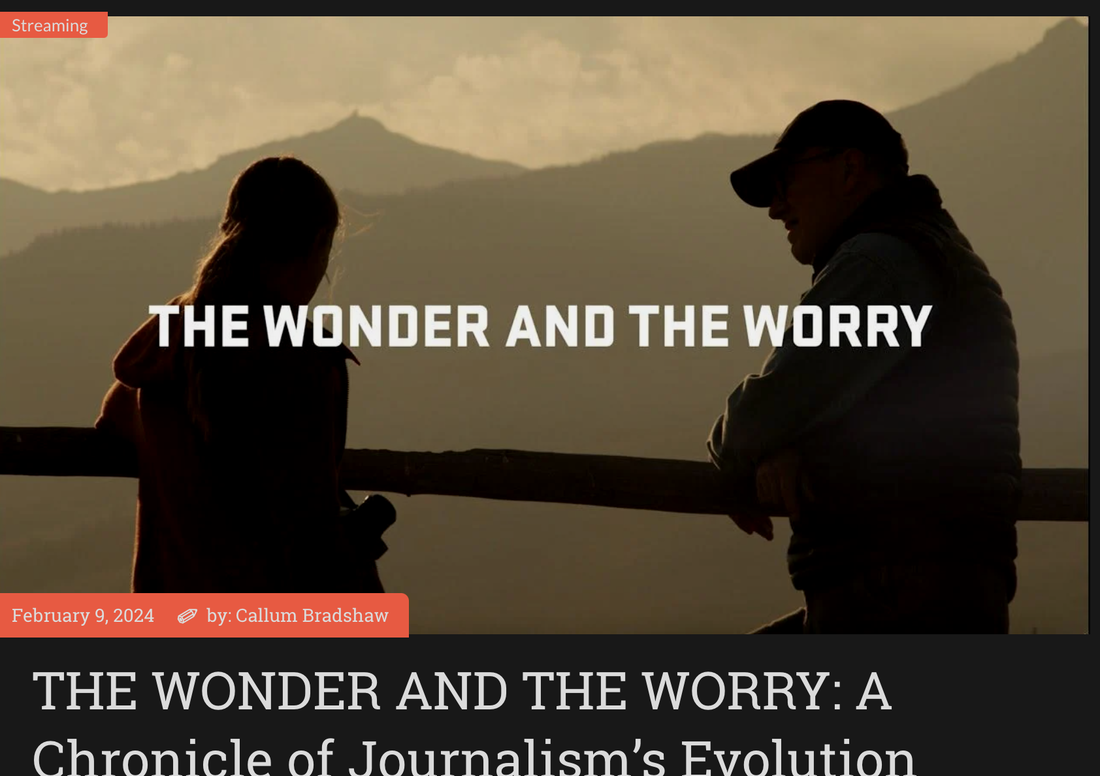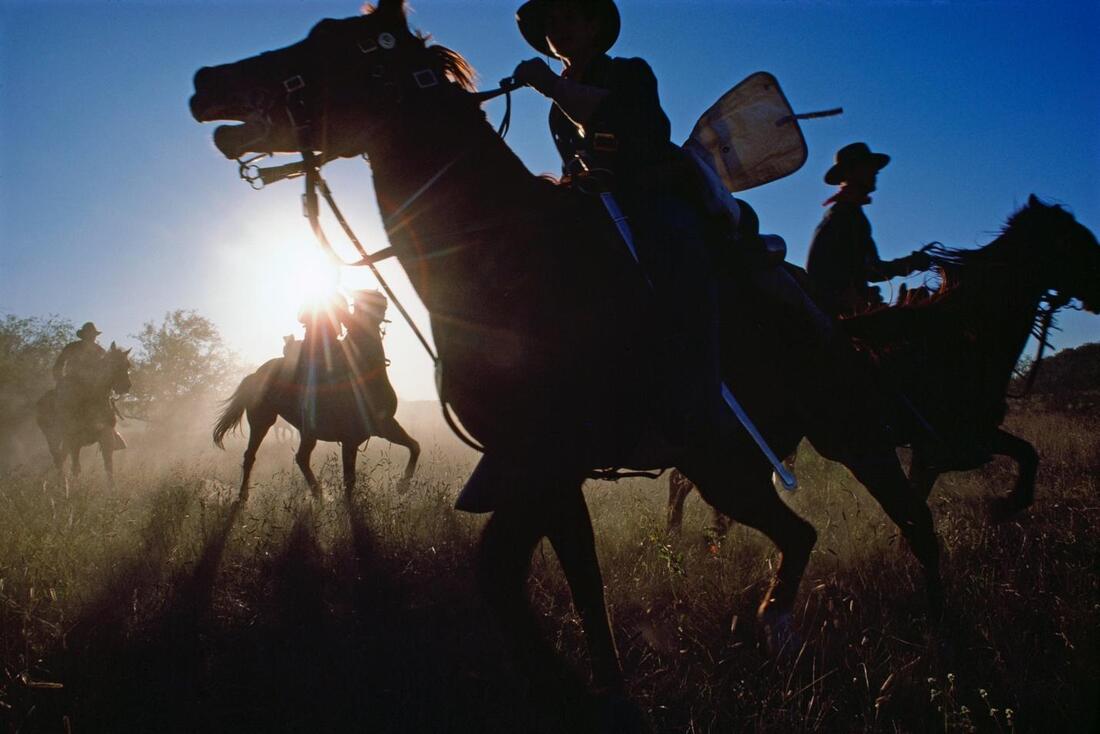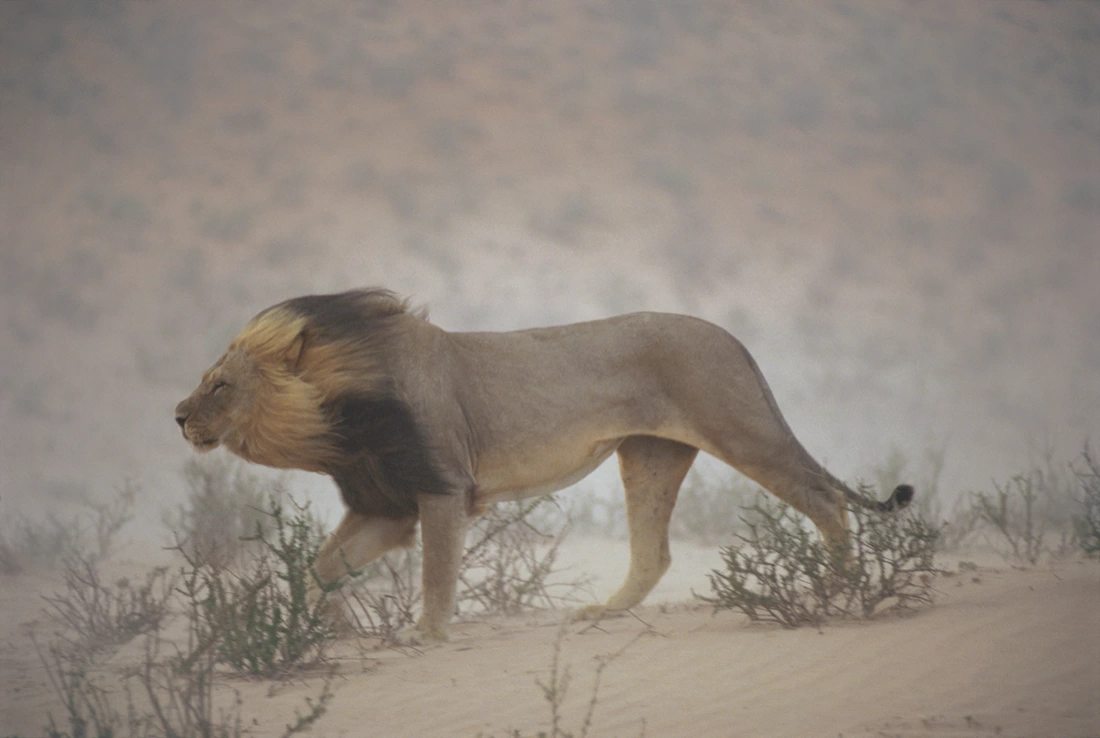|
In the realm where narratives intertwine with history’s fabric, “The Wonder and the Worry” emerges as a compelling documentary feature, chronicling the legacy of two generations of photographers who sculpted the narrative of National Geographic Magazine. Directed by David Baker and lensed by Saskia Madlener, this cinematic journey unfolds against the backdrop of the evolution of modern journalism. Watch “The Wonder and the Worry” Official film trailer here: https://www.youtube.com/watch?v=oPKxr5HNvGQ&themeRefresh=1. At its core lies the compelling story of Chris and Louise Johns, a father-daughter duo whose photographic prowess encapsulated the essence of our world amidst journalism’s shifting tides. From Chris’ humble beginnings amidst Oregon’s rural landscapes to his ascendancy to the editorial helm of National Geographic, and Louise’s navigation of the contemporary photojournalism landscape, the film immerses viewers in the complexities of storytelling amid digital disruption and commercial imperatives. In candid interviews, Chris Johns reflected on his storied career, Q: What was it like having your daughter, Louise, following in your footsteps as a photographer? A: “When Louise was growing up, I never imagined her being a photographer. As she attended the University of Montana and her interest in photography grew, I was delighted. From that moment on, I had no desire to pressure or push her. I wanted Louise to find her voice, follow her passions and live a meaningful and satisfying life. To work and collaborate with Louise is one of the greatest pleasures of my life.” Q: What emotions did you experience when watching the finished documentary for the first time? A: “When watching The Wonder and the Worry, I was deeply touched. It reinforced how fortunate I am to have worked for National Geographic, but, more importantly, how blessed I am to have such a wonderful family. It also brought back fond memories of the people in my life who have lifted and supported me.”Johns shared profound insights garnered from the sweeping vistas of Africa’s Great Rift Valley to the hallowed halls of National Geographic headquarters. “An accomplished journalist has always had to be curious, open, brave, and nimble,” he muses. “What has changed are the tools for telling a story and how stories are shared… The most challenging part is finding a financial model that supports journalists doing relevant, important work.” His words poignantly encapsulate the industry’s struggle to balance tradition with innovation amidst the digital revolution. Transitioning from acclaimed photographer to Editor-in-Chief of National Geographic, Johns remarks, “National Geographic magazine gave me the opportunity to reach a large international audience… years of being a field photographer taught me the value of being open to an abundance of ideas, always being curious, and adapting.” His sentiments echo the resilience inherent in journalism’s ever-evolving landscape. Director David Baker also added his perspective on the film’s exploration of journalism’s metamorphosis: “Through ‘The Wonder and the Worry,’ we aimed to capture the essence of storytelling in the face of modern challenges. National Geographic has epitomized journalistic excellence for decades, and this film pays homage to the dedication and vision of individuals like Chris and Louise Johns.” In our exclusive Q&A, Baker continued to underscore the film’s commitment to honoring storytelling’s legacy while navigating the complexities of the digital age. Yet, amidst the triumphs of exploration lie shadows of uncertainty—a stark reminder of the challenges confronting modern media. As Chris and Louise navigate this terrain, they confront the realities of an industry grappling with commercial pressures, where the pursuit of truth contends with the demands of the marketplace. Q: How did you decide to make a film about Chris and Louise Johns? A: “Chris is an alum of Oregon State University, where I work. I was teaching a documentary film workshop during the Pandemic, and I invited Chris to give a guest lecture via Zoom. He dialed in from Montana and shared some of his photos and the stories behind them. I knew of his work, but seeing those photos shocked me: I’d grown up with them in the 80s and 90s. I also recalled the magazines he edited, the strong journalism and amazing covers. Those stories shaped me. I knew right away that here was a story waiting to happen. At first, I thought it might be a short documentary, but then I met Louise and it was clear that there was much more to the story than a mere profile.” Q: The film is produced by Oregon State University…isn’t that unusual for a feature film? A: “I’d say it’s less common than it has been, but not unusual. Big research universities like Oregon State have a long history of storytelling. I had a predecessor named Jim Larison. He was an ecologist and filmmaker on staff who made dozens of amazing films in the 80s and 90s, and many of them were collaborations with the National Geographic Society. They were science based and some had a big impact on conservation and shaping public policy, like the establishment of the Roadless Rule, which was helped along by his film Ancient Forests. Our team at Oregon State follows in Jim’s footsteps, making documentaries about important issues faced by the world. This kind of deep storytelling is part of our mission as an institution. And it also has the benefit of reflecting positively on our brand. I believe public universities have a responsibility to tell fact-based stories to a wide audience to drive solutions. More and more universities are acting like corporations, with top-heavy administrations and corporate style communications. But we’re also losing trust. We blindly imitate corporations at our peril. I think Oregon State is hanging onto it roots as a public good and a benefit to society, and I think that through our work in deep storytelling, we’re helping that. Tools for cinematic storytelling have been democratized greatly, and that allows us to work with very small budgets. Still such work for the public good is constantly under threat and needs to be protected.” Against this backdrop, “The Wonder and the Worry” emerges as a poignant meditation on storytelling’s power to shape our understanding of the world. Premiering at prestigious festivals such as the Big Sky Documentary Film Festival and the Princeton Environmental Film Festival, the film invites audiences to contemplate the wonder of our planet and the worries threatening its fragile balance.
As the credits roll and the lights dim, “The Wonder and the Worry” leaves an indelible mark—a testament to storytelling’s enduring power to illuminate the human experience. In a world besieged by uncertainty, it serves as a beacon of hope—a reminder that, in the hands of visionary storytellers, narrative power transcends the barriers of time and space. Continuing its cinematic odyssey, “The Wonder and the Worry” sheds light on journalism, photography, and environmental advocacy’s intersection. From the American West’s sprawling landscapes to media institutions’ bustling corridors, the film unveils the intricate tapestry of storytelling that defines our collective narrative. For more about the film, visit the official website here Catch “The Worry and Wonder” at these Film Festivals February 25, 2024 World Premiere: Big Sky Documentary Film Festival, Wilma Theater, 6:30 pm April 5 – 14, 2024 Princeton Environmental Film April 17 – 18, 2024 Sneak Preview – PRAx Theater, Corvallis, Oregon, 7 pm
0 Comments
Leave a Reply. |
WORKHOUSE
THE HOUSE THAT WORK BUILT. Archives
July 2024
|






 RSS Feed
RSS Feed